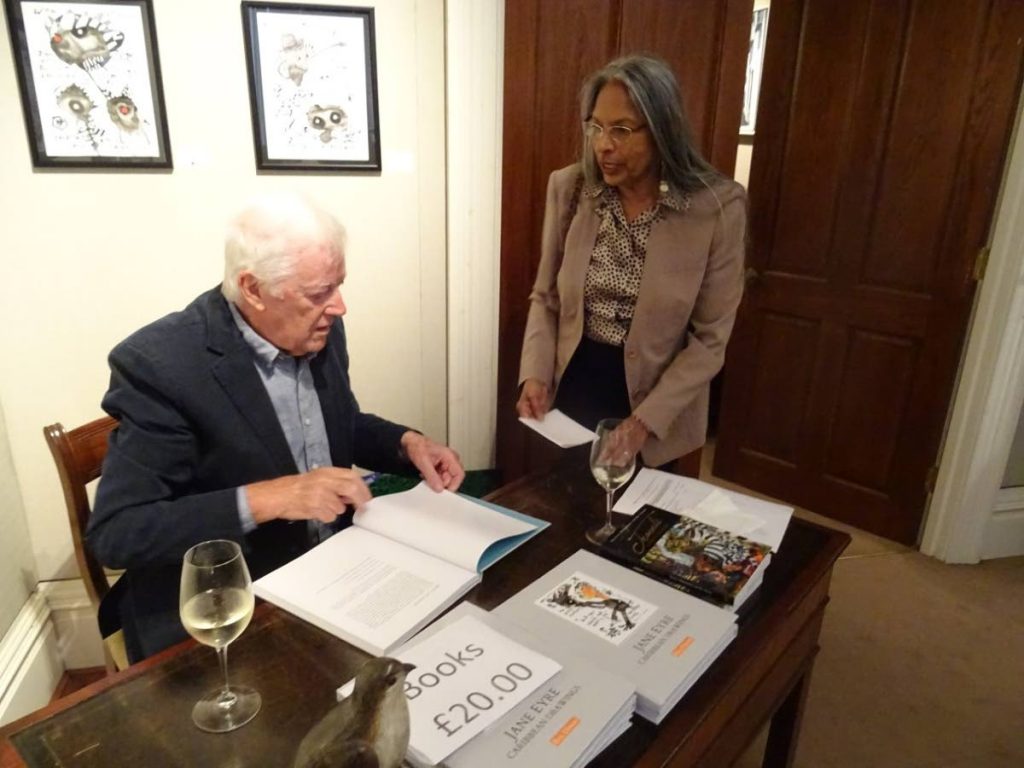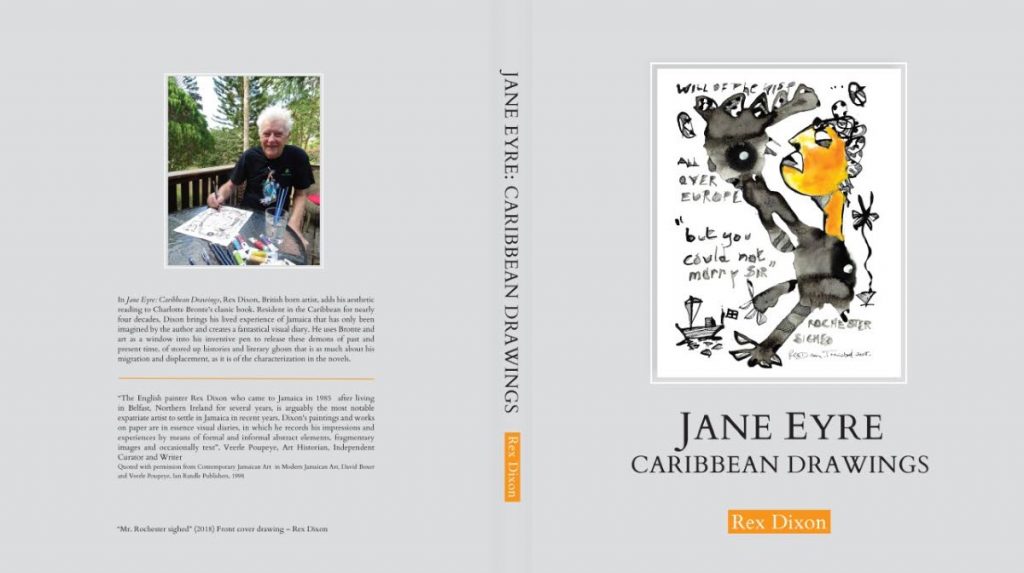Going beyond accepted reality

Review: Jane Eyre: Caribbean Drawings
Author: Rex Dixon’s
JEAN ANTOINE-DUNNE
REX DIXON’S new work, Jane Eyre: Caribbean Drawings focuses on migrations and uses two novels by two female writers to enact his several forms of journeyings: there are voyages across water and across time; movement from reality to imaginative reconstruction and from writing to drawing.
Dixon reads Charlotte Bronte’s novel Jane Eyre through Jean Rhys’ Wide Sargasso Sea and finds correspondences in his own life and career. In adding his own personal reading Dixon adds another layer to the many readings and imaginings that have been inspired by a female novelist who never visited the Caribbean, but whose novel evoked a powerful response by a Caribbean writer.
The drawings speak of Dixon’s movement from England to Northern Ireland and to Jamaica and then Trinidad. They are also excursions into his early career as desiring writer and teacher. They are illumined by his reading of the novels and his research into the lives of these writers. But they are also about memory or even childhood nightmares that surface like the ants crawling across the paper in these drawings. Such memories are suggested by the repeated refrain, "Charlotte Charlotte hold on tight in the middle of the night."
The drawings in Dixon’s work signify the desire to go beyond the boundaries of accepted reality and to do so by exploring the interstices or the in-between shadow shapes of existence through a form of dream work; and reading is one form of dreaming. Figures dart out from the corners of experience as they become nudged into new meanings by epiphanic moments of recognition on reading a literary text.
Phantasmagorical shapes that come from the artist’s musings crowd the boundaries of the page and here feminist scholar Patricia Mohammed’s interpretations and gloss of the work provide fruitful points of entry.
The ship is key – harking to the journeys of the author Jean Rhys, who left Dominica to travel to England, and that of the artist Rex Dixon, who left England to travel to the Caribbean. But it is also about the Bronte sisters, who are claimed by both Ireland and England, and whose writings are very much about mind-journeying.
Dixon asks us to question the nature of reality and how we are manipulated into seeing one particular version of a story. For Jane Eyre, on one level, as the sketches point out, is about how a mind can be coerced into believing what is not true. Hence several pages are given over to the revelations by Mason and to Jane Eyre’s recognition of some part of the lie told to her by Rochester, whom Dixon calls a "chancer." And is Wide Sargasso Sea not about addressing how such untruths might be unpinned?
Christophine, the black Martiniquan nurse who in Wide Sargasso Sea unwillingly gave Antoinette (later to be renamed Bertha by her husband, Mr Rochester), the love potion for her husband, casts doubt on seemingly concrete reality. Through her scepticism Dixon opens the door to the confusion between reality and dream.
England and Thornfield are transformed into cardboard houses in these drawings, which means that Dixon is interpreting the core of Wide Sargasso Sea. More specifically "England is a dream" and "They tell me I am in England, but I don’t believe them. We lost our way to England": this hits at the very heart of colonial fantasy of England as the mother country; a lie experienced by emigrants to this day.
There is another form of transmutation in the pages of this book and that is the kind that comes when the artist allows his medium to wander into dreamscapes. Ink allows such journeyings into the subconscious where shapes emerging at the edges or shadows of a work take on powerful significance and beckon to spirit presences or deeply buried memories, allowing lines to move into new correspondences. Look for example at where three ships gesture to Christopher Columbus, the navigator who sailed to the Americas by mistake. But the textual references point to a period spent by the artist in Belfast "just 200 yards from Belfast Lough."
The drawings speak of hidden psychic spaces. The lives of Charlotte, Emily and Anne Bronte on the surface were restrained and contained and yet their imaginations led to works deemed at the time to be coarse and unladylike. So "she dreamed of wild beasties": figures appear feline and fierce, enchained yet fleeing. These and others seem to beckon to an elsewhere. But these places are disparate and not contained by time, by one memory or one reading.

A novel, says Dixon, is made up of fragments that the novelist tries to put together and his drawings are an attempt to put together another set of fragments. These focus on how time changes our perspective, but also how a transition from one climate to another also changes how we see. One page brings together 1839 and 2018 – the time of the completion of this book – and reminds us of the long gestation of Jean Rhys’ book by framing them within an idea and image of chrysalis. Insects flitter, a butterfly emerges from its cocoon. One tiny creature peers inquisitively at a large butterfly morphing into a face. And, at the bottom of the page like another signature, "I did these drawings in Trinidad."
Interestingly, from this moment on shapes become almost plain. They emerge as portraits of the artist, where colours gradually begin to explode from the pages and seem even to attempt a cacophony. Yet the man who is newly arrived from England feels only silence. Is it Rochester of Wide Sargasso Sea or Dixon who cannot bear the silence and the heat?
On these pages colour at times signifies the heat of another’s opinion and the searing effect of Rochester’s condemnation of his Caribbean life. Section four is an expressionist rendering of the confusion and treacheries experienced by both Jane Eyre and Antoinette/Bertha. The leap through fire becomes a sign of the double reality that both women live.
The book closes with Antoinette/Bertha given the last word in full colour, her "long black hair streaming against the flames as she stood." The great Caribbean novelist and philosopher Wilson Harris read this last event as recorded by Jean Rhys as a leap into the tree of life of pre-Columbian lore. It is apocalyptic there and here. It is a leap to life.
These pages have also taken leaps. They bring together writing and drawing. This hybrid form emerges from close intertextual reading and a form of art that seeks new avenues for the artist as he navigates past and present and the many layers of experience that shape how we see.


Comments
"Going beyond accepted reality"